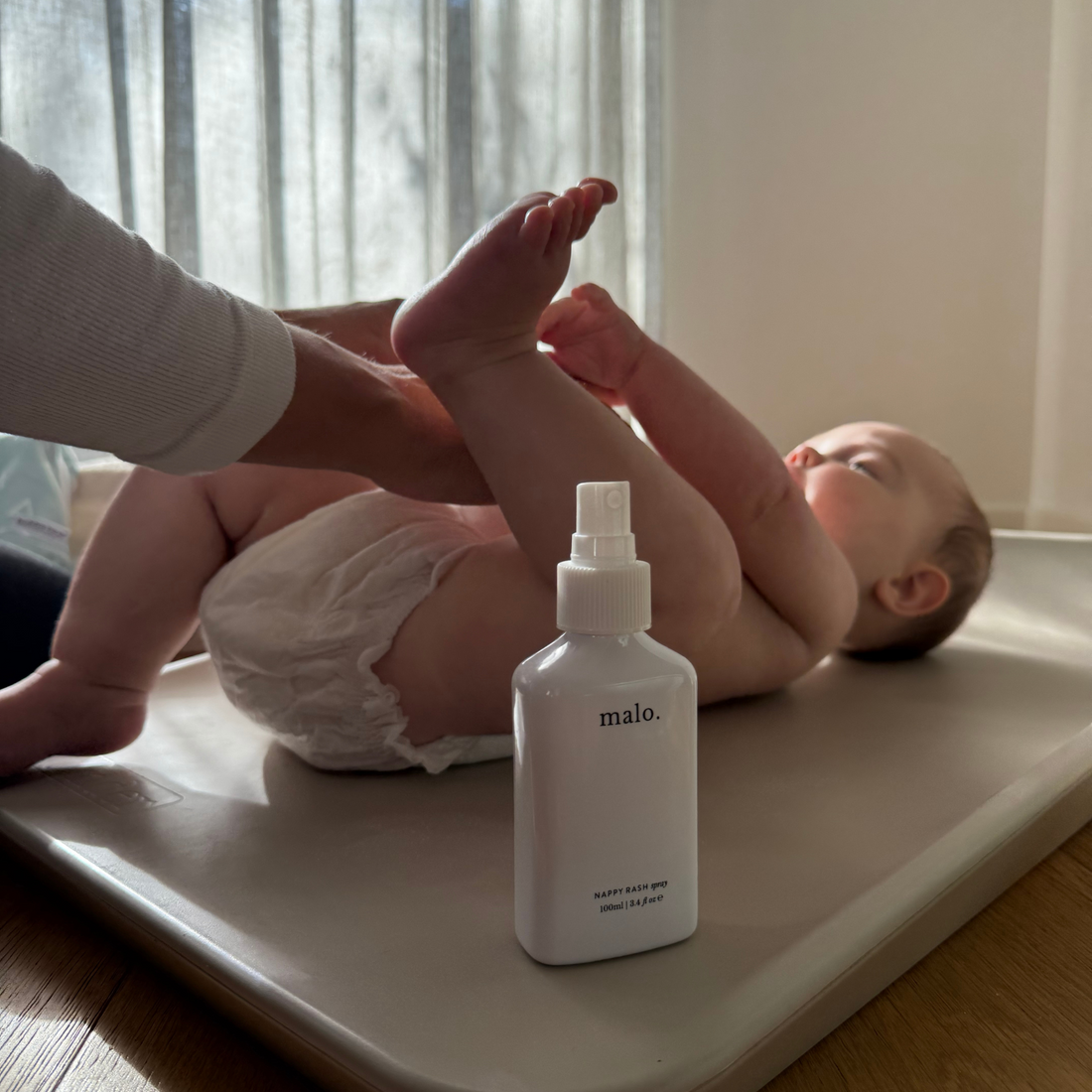Soothing raw, sore bums is our business.
Sore, red bums are simply no fun. Ever picked your kid up from daycare with a raging nappy rash? Whilst a very common condition, when it happens to your kid: ghastly. Nappy rash is when your babe's bottom skin is damaged and irritated. Although in mild cases, it can be unpretty and fleeting, if left untreated, it has the potential to spiral into something serious.
The main cause of the nappy rash is wearing a wet or dirty nappy for too long and is a reaction to ammonia that can be found in urine and poo. That's an easy one to get on top of: do more nappy changes, more often, but there are also some other factors that could be contributing and are worth considering when your troubleshooting a red, sore toosh.
Is it too much friction?
Friction between the nappy and your kid's skin could be a factor. Making sure that you have the right fit/size and also nappy shape could be a solution. Remember, the brand of nappies you used as a newborn doesn’t need to be the ones you use for the next two years. Change it up and see what works. It might be time for a pull-up.
Is it diet?
Whilst kids get used to a new food, allergens and certain foods can prove sensitive and lead to sore bums. Baby bolognese, a parenting staple and an easy win for dinner time, is actually highly acidic. Other acidic foods that may inflame your baby's bottom are citrus fruits, strawberries, pineapple, tart fruits (apples and pears) and tomatoes.
Vaughne Geary, a Melbourne-based naturopath says, “Kid's digestives are still developing and building their digestive capacity, so certain foods aggravate the lining of the stomach. This can lead to inflammation and can manifest in the body in the form of eczema and nappy rash. Overly acidic foods reduce the body’s capacity to be ably digested, and therefore these foods should be avoided or they exacerbate diaper rash.”
Is it teething
Ever heard the phrase teething bum? This is coined as kids can get a nappy rash when they are teething. It’s not the teeth cutting through that has a direct impact, but the whole teething process can upset their bowels ranging from constipation to diarrhoea - causing skin irritability.
Is it their body care?
Soaps, detergents and fragrances left on the skin from bathing or left on cloth nappies from washing can be an irritant. If you think this may be the case, starting by swapping bathtime products is a good idea. Noody Body Wash supports naturally stronger, happier little skin from day one. Oils also don’t foam and aren’t drying to the skin, so this one is great for delicate and sensitive skin. Moving to a more eco-friendly and chemical-free washing liquid could also be a game changer.
Quick Guide to Treating Nappy Rash
1. Change Frequently: The best rule is to keep their bottoms clean and dry with a change every hour. Frequent changes give your child’s skin a chance to heal. Wet and soiled nappies without saying must be changed immediately.
2. Clean Their Skin: After a soiled or wet nappy change, use lukewarm water on a light cotton cloth to clean the skin. Sometimes wipes can be an irritation so keep it simple.
3. Barrier Up: Be sure to use a gentle/ mild soap-free wash during bath time. After bath time, pat your baby’s bum dry and gently apply a simple moisturiser that is not greasy and easily absorbed, and so will replenish and protect, while soothing chamomile will help calm irritation. The final stage is to add another layer of protective cream. This cream should be thick and preferably contain Zinc oxide an ingredient that creates a barrier layer with staying power. Apply the cream so it is thick enough that you can still see some of it at the following nappy change. Sudocrem has been used since dawn of parenthood and adds a thick and robust layer to their skin. If you want something a little more new age and natural-focused, Beetl Baby Balm uses beeswax as the barrier agent rather than zinc.
4. Free the Bottom: If you’re home together, nappy free time off is amazing. Give their bottom some fresh air for as long as possible every day.
5. Use Disposable Nappies: High-tech nappies for a high alert problem. Disposable nappies absorb more moisture. If you use cloth nappies, consider switching to disposable nappies for a short time until the rash has healed
6. Consult Your Healthcare Provider: For severe nappy rash or nappy rash that won’t go away with simple measures, your GP might recommend using weak corticosteroid creams.




























